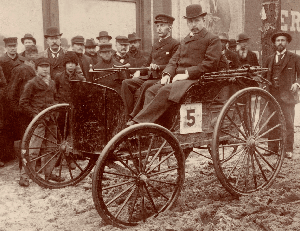The Gilded Age was in full swing by the time Charles E. and J. Frank Duryea began building their bicycles in Washington. Known as the “Bicycle Brothers,” they were already working to usurp the centuries-long method of travel: the horse.
By the 1880s, bicycles were competing for space along the main streets of America’s cities. The competition was so fierce, there were even events held in numerous places across the globe that paired horses versus bicycles. Even “Buffalo Bill” Cody and S.F. Cody (no relation) scoured the European countryside in search of cyclists willing to race against their horses. The races, often spanning hours and sometimes days, eventually morphed into races created exclusively for cyclists, such as the famous six-day races.






